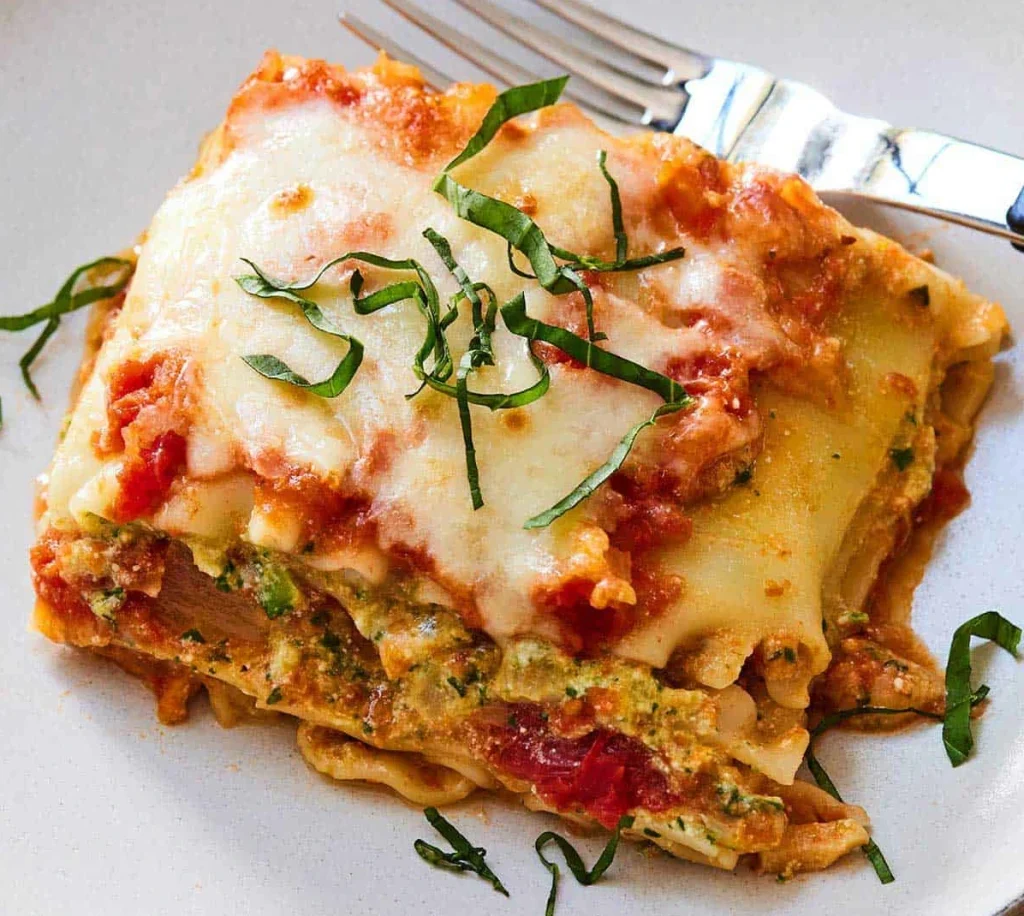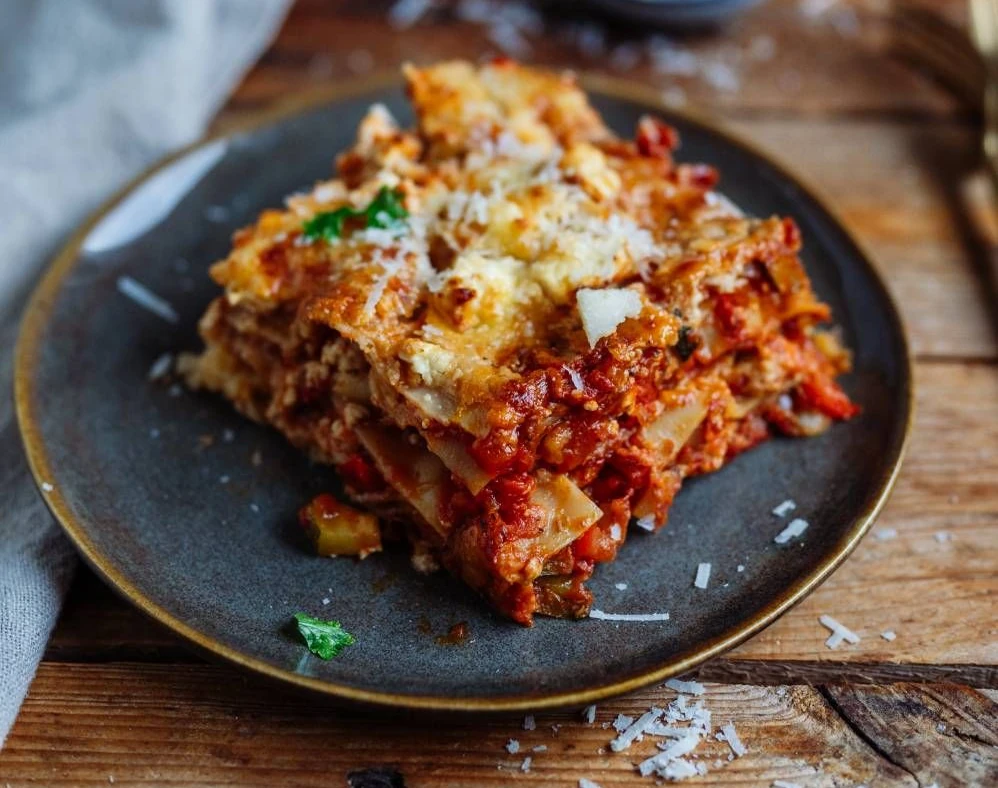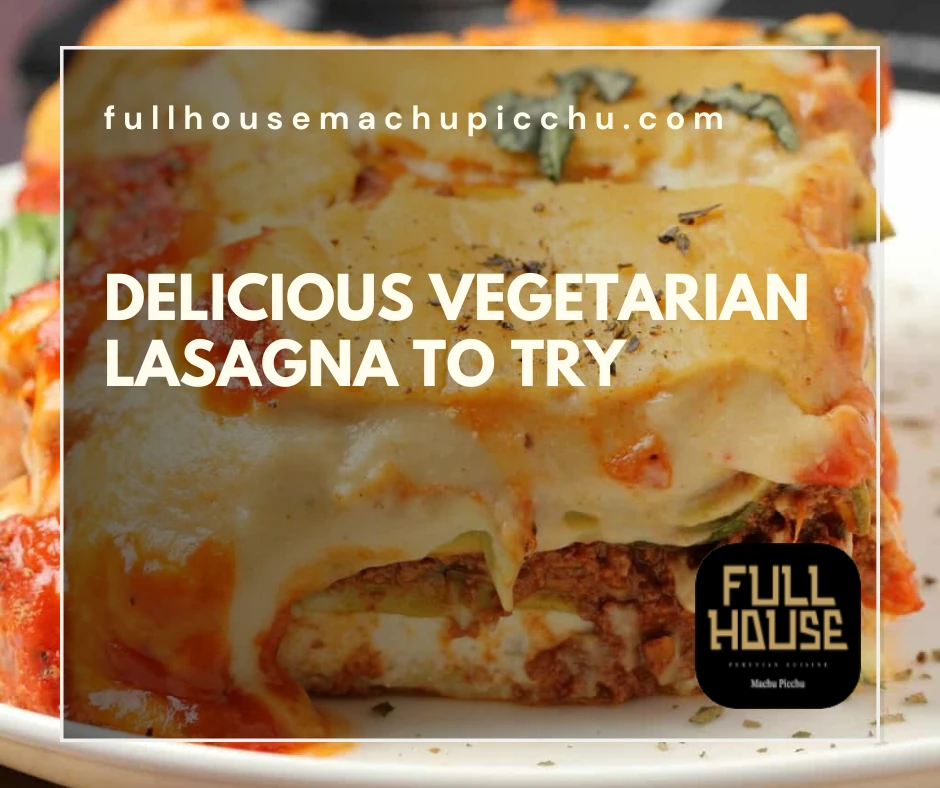When it comes to crafting a hearty meal that satisfies both the stomach and the soul, vegetarian lasagna stands out as a timeless favorite. Whether you’re a corporate executive in need of a quick yet fulfilling dish after a long day, a freelance photographer looking for culinary inspiration, or an academic researcher seeking a comforting meal after a day of fieldwork, this vegetarian lasagna recipe is designed to delight. It’s a dish that transcends dietary preferences and brings people together around a table, offering a rich tapestry of flavors and textures that cater to diverse palates.
Vegetarian lasagna is more than just a meal; it’s a celebration of the art of cooking. Its layers of flavors and the interplay between the ingredients create a culinary symphony that is both comforting and exciting. The process of making it can be therapeutic, providing a creative outlet for those who enjoy the alchemy of cooking. Whether you’re an experienced chef or a novice in the kitchen, this lasagna offers an opportunity to experiment with flavors and ingredients, allowing you to tailor it to your personal taste and dietary needs.
Vegetarian Lasagna
Vegetarian lasagna is not just about replacing meat; it’s about elevating vegetables to their full potential. The combination of fresh ingredients, rich sauces, and creamy cheese creates a symphony of flavors that can be as complex as any meat dish. Plus, it’s a versatile meal that can be customized with a variety of vegetables, cheeses, and even pasta types to suit your personal taste. The beauty of vegetarian lasagna lies in its ability to transform humble vegetables into a gourmet delight that is both nourishing and satisfying.
Why Choose Vegetarian?
Opting for a vegetarian dish doesn’t mean sacrificing flavor. In fact, it opens up a world of culinary exploration. By focusing on vegetables, you not only enjoy a healthier meal but also support sustainable eating practices. Vegetarian lasagna is a fantastic way to enjoy a classic dish with a modern twist, appealing to vegetarians and meat-lovers alike. The absence of meat encourages the use of an array of spices and herbs, which enhance the natural flavors of the vegetables and create a dish that is both aromatic and delicious.
Choosing vegetarian meals also aligns with a growing awareness of the environmental impact of meat production. By reducing meat consumption, you’re contributing to a more sustainable planet. Moreover, vegetarian dishes often tend to be lower in saturated fats and calories, making them a healthier option for many. Embracing a vegetarian lifestyle, even partially, can lead to improved health outcomes and a reduced risk of chronic diseases. This lasagna offers all these benefits while still providing a hearty and satisfying meal that can be enjoyed by everyone.
Ingredients for a Show-Stopping Lasagna
To create a vegetarian lasagna that rivals any full house restaurant experience, you will need a selection of fresh ingredients. Here’s what you’ll need:
- 9 lasagna noodles
- 2 cups of ricotta cheese
- 2 cups of mozzarella cheese, shredded
- 1 cup of parmesan cheese, grated
- 2 cups of marinara sauce
- 1 zucchini, thinly sliced
- 1 red bell pepper, chopped
- 1 cup of mushrooms, sliced
- 1 onion, diced
- 3 cloves of garlic, minced
- 2 cups of fresh spinach
- 1 tablespoon olive oil
- Salt and pepper to taste
- Fresh basil for garnish
These ingredients not only bring a burst of flavor but also ensure a balanced nutritional profile. The combination of cheeses provides a rich and creamy texture, while the vegetables add freshness and a variety of nutrients. Each component plays a crucial role in creating a dish that is both indulgent and wholesome. The use of fresh ingredients is key to achieving the best flavor and texture, so opt for high-quality produce when possible.

The Secret Ingredient: A Machu Picchu Twist
Inspired by our travels, we like to add a Machu Picchu style twist to our vegetarian lasagna. Incorporating a hint of gnocchi small potato dumplings traditionally found in Peruvian dishes provides an unexpected yet delightful texture that complements the layers of pasta and vegetables. This addition not only enhances the dish’s texture but also adds a touch of cultural flair, making the lasagna an international culinary experience.
The inclusion of gnocchis in the lasagna brings a soft, pillowy texture that contrasts beautifully with the crisp vegetables and creamy cheese. This fusion of Italian and Peruvian fusion cuisine creates a dish that is both familiar and exotic, offering a new flavor profile that is sure to impress. By introducing this unique twist, you’re able to take a traditional food and transform it into something extraordinary, broadening your culinary horizons and delighting your taste buds.
Crafting Your Lasagna: Step-by-Step
Cooking vegetarian peruvian lasagna is an art that balances flavors and textures. Here’s a step-by-step guide to help you create a masterpiece in your kitchen:
Step 1: Prepare the Vegetables
Start by heating olive oil in a large skillet over medium heat. Add the onions and garlic, sautéing until they are fragrant and translucent. Next, introduce the mushrooms, zucchini, and red bell pepper, cooking until they are tender. This method of preparation allows the vegetables to release their natural flavors, which form the foundation of your lasagna’s taste.
The sautéing process also helps to caramelize the vegetables slightly, adding depth to the flavor profile. As the vegetables cook, they absorb the olive oil and seasonings, enhancing their taste and aroma. This step is crucial in building the rich and savory base that will complement the layers of cheese and pasta. Be sure to cook the vegetables until they’re just tender to maintain a bit of crunch, which will add a pleasant texture to the dish.
Step 2: Build the Sauce
Stir in the marinara sauce, letting it simmer with the vegetables for about 5 minutes. This allows the flavors to meld beautifully. Season with salt and pepper to taste. The simmering process is essential as it deepens the flavors, making the sauce an integral part of the dish rather than just a topping.
As the sauce simmers, it thickens slightly, ensuring that it clings to the vegetables and pasta layers. This creates a cohesive dish where each bite is infused with the rich, tomatoey goodness of the marinara. Adjust the seasoning to your liking, as the right balance of salt and pepper can elevate the dish from good to exceptional. This sauce acts as the glue that binds the layers of your lasagna together, ensuring each bite is full of flavor.
Step 3: Cook the Noodles and Gnocchis
While the sauce is simmering, cook the lasagna noodles according to package instructions. In a separate pot, prepare the gnocchis until they float to the surface, indicating they’re ready. Cooking the pasta and gnocchis to the perfect texture is crucial for the overall success of the dish.re that the noodles are al dente, as they will continue to cook in the oven. Overcooked noodles can become mushy and detract from the desired texture. The gnocchis, once they float, should be tender yet firm, adding a delightful contrast to the layers. This step ensures that the pasta and gnocchis provide the right foundation for the rest of the ingredients, creating a harmonious blend of textures in the final dish.
Step 4: Layering the Lasagna
Preheat your oven to 375°F (190°C). Begin by spreading a layer of the vegetable sauce at the bottom of a 9×13 inch baking dish. Follow with a layer of noodles, then a mixture of ricotta cheese and spinach. Sprinkle a few gnocchis before adding mozzarella cheese. Repeat the layers, finishing with a generous topping of parmesan cheese. The layering process is where you can truly make the lasagna your own, adjusting the ratios to suit your taste.
Take care to spread each layer evenly to ensure that the flavors are distributed throughout the dish. The layering of ingredients not only creates a visually appealing dish but also ensures that each bite offers a balanced taste of all components. The final topping of parmesan cheese will melt and form a golden crust, adding a delightful crunch to the top layer. This methodical layering is key to achieving the perfect lasagna, where each ingredient shines in its own right.
Step 5: Bake to Perfection
Cover the dish with aluminum foil and bake for 25 minutes. Remove the foil and bake for an additional 15 minutes, or until the cheese is golden and bubbly. Let the lasagna cool for a few minutes before slicing. Baking the lasagna to perfection requires patience, as the layers need time to meld and develop their full flavor.

Serving Suggestions
Serve your vegetarian lasagna with a side of fresh green salad and a slice of crusty bread. Garnish with fresh basil for a burst of aroma and color. This dish pairs wonderfully with a light, fruity red wine or a crisp white, enhancing the dining experience. The simplicity of the salad and bread complements the rich flavors of the lasagna, creating a well-rounded meal.
Choosing the right wine can elevate the dining experience, with reds like Chianti or whites like Pinot Grigio offering a perfect balance to the lasagna’s flavors. The fresh basil not only adds a pop of color but also a fragrant aroma that enhances the overall presentation. By pairing the lasagna with these simple yet effective sides, you’re creating a meal that is both satisfying and sophisticated, perfect for any occasion.
Final thoughts
In the world of vegetarian pasta dishes, this lasagna stands out not just for its taste but for its ability to bring a little bit of the world into your kitchen. Whether you’re at home or on the road, this dish offers a piece of culinary comfort that you can rely on. If you travel to Machu Picchu don’t forget to come to Full House Restaurant and have a taste of the best vegetarian lasagna.
Happy cooking, and may your meals be as adventurous as your travels! This recipe is more than just a dish; it’s an invitation to explore the rich tapestry of flavors that vegetarian cooking has to offer, encouraging you to embrace the joy of cooking and the pleasures of eating.



